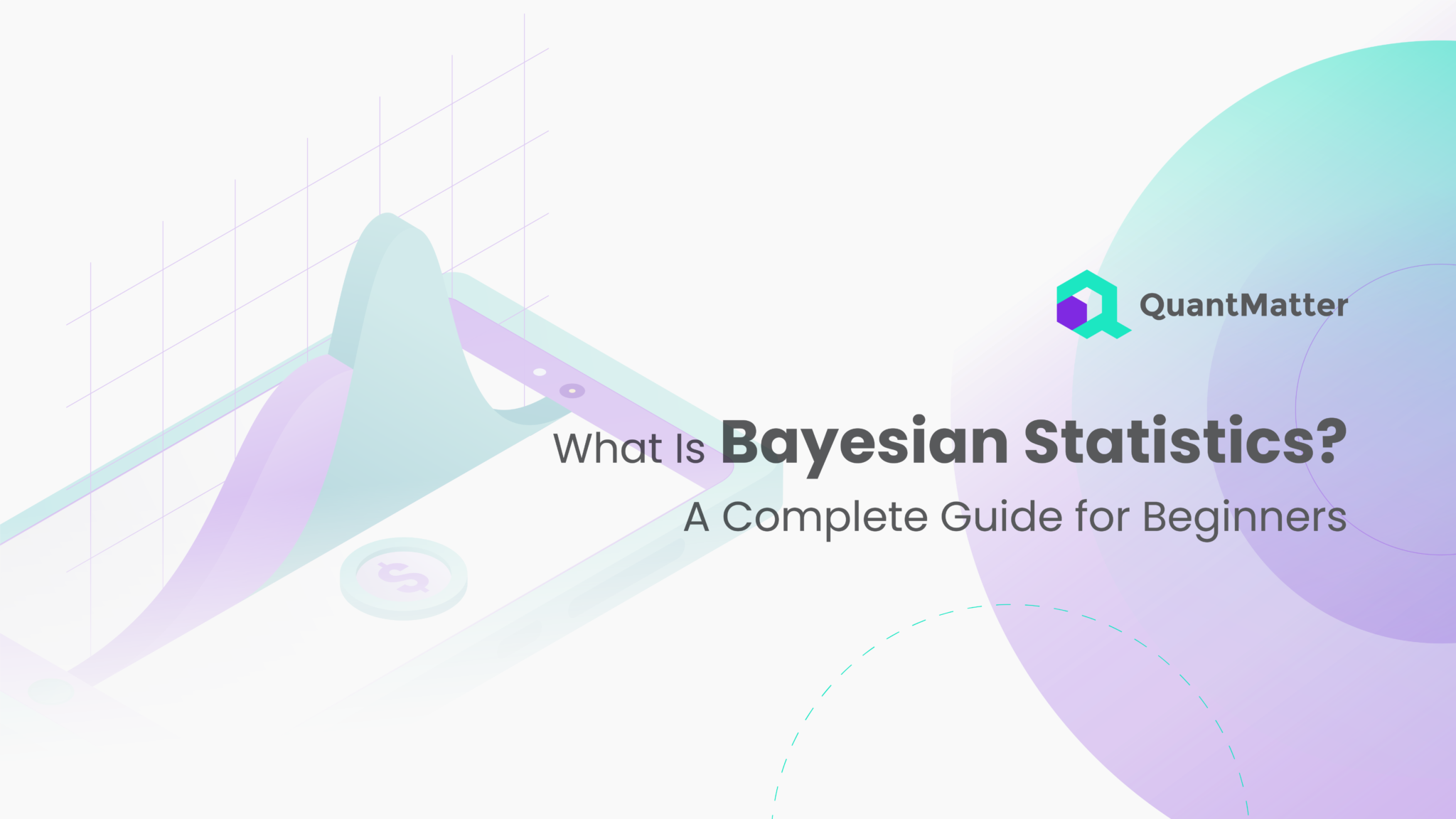
Bayesian statistics is a powerful tool for making sense of data through probability. Unlike traditional statistics, which focuses on frequency or likelihood of events, Bayesian statistics incorporates existing beliefs, or priors, and updates these beliefs as new data is available. This approach is particularly useful in fields where data is incomplete or uncertain, allowing for more flexible and comprehensive analysis.
For beginners, the appeal of Bayesian statistics lies in its ability to merge past knowledge with new information to make informed predictions. This method has wide-ranging applications, from machine learning and artificial intelligence to medical research and beyond. In this guide, we’ll explore the fundamentals of Bayesian statistics, providing a solid foundation for those new to the subject.
Understanding Bayesian statistics starts with grasping two key concepts: priors and likelihood. Priors are your beliefs about something before new data is considered. Likelihood is how probable new data is under different scenarios. Together, these elements are used to update beliefs in light of new data, a process known as Bayesian inference. Now, let’s delve deeper into these core principles and discover how they apply to real-world scenarios.
The Basics of Bayesian Statistics

Bayesian statistics offers a robust and flexible framework for understanding how beliefs should be updated in light of new evidence. This approach stands in contrast to classical statistics, where the emphasis is often on analysis based on a static dataset, from which fixed conclusions are drawn. Bayesian statistics, on the other hand, is dynamic, viewing probabilities not merely as static odds but as fluid expressions of belief that adjust and evolve as new data is incorporated.
At the core of Bayesian analysis is the computation of the posterior probability. This is the probability that a hypothesis is true given the observed data. This calculation uses Bayes’ theorem, an essential tool in Bayesian inference, which mathematically combines prior beliefs (the initial degree of belief in a hypothesis before new data is considered) with the likelihood of the observed new data under these hypotheses, and the overall probability of observing the data. The resulting posterior probability provides a new, updated belief based on the evidence at hand.
Also Read: 7 Top Predictions of the Crypto Bull Run in 2024
Bayes’ theorem not only adjusts beliefs about the likelihood of a hypothesis but also refines these beliefs iteratively as more and more data becomes available. This ongoing process underscores the adaptive nature of Bayesian analysis, making it particularly suited for situations where information unfolds or accumulates over time. By continuously integrating new information, Bayesian statistics offers a methodological framework that can respond more fluidly to changes in available data compared to classical approaches.
This iterative, evidence-based approach is what sets Bayesian statistics apart, making it a powerful tool for statistical inference in many fields ranging from science to business analytics. As such, Bayesian methods have gained prominence for their ability to handle complex modeling problems where the integration of prior knowledge and new evidence is crucial.
Key Components of Bayesian Analysis

Bayesian analysis is a statistical methodology that interprets probabilities subjectively. It emphasizes the use of prior beliefs, combined with observed data, to guide the updating of beliefs through calculation. Here are some key components of Bayesian analysis:
Prior Probability (Prior)
The prior probability is foundational in Bayesian statistics, representing pre-existing beliefs or knowledge about parameters before any new data is examined. This could be based on historical data, expert opinion, or established research. The choice of a prior can be subjective, and it greatly influences the subsequent analysis. Priors can be informative, weakly informative, or non-informative (vague), depending on how much initial information they contain.
Likelihood
Likelihood is the core of Bayesian inference that quantifies how probable the observed data is under different hypothetical scenarios or parameter values. It acts as a bridge between the prior distribution and the data observed, modifying the prior beliefs in the light of new evidence. This updating happens through the likelihood function, which is central to recalibrating beliefs according to how well the model fits the data.
Posterior Probability (Posterior)
The posterior probability is the updated belief after considering both the prior and the likelihood of the observed data. This is the heart of Bayesian analysis where both sources of information are formally combined using Bayes’ Theorem. The posterior probability provides a new, comprehensive view of the parameter after accounting for the old beliefs (prior) and new evidence (likelihood). It serves as the basis for further decision-making and inference in Bayesian analysis.
Bayes’ Theorem
Bayes’ Theorem is the mathematical formula at the center of Bayesian analysis. It formalizes the way in which the prior and likelihood are combined to form the posterior. The theorem states that the posterior is proportional to the product of the prior and the likelihood. This formula not only underpins the updating of beliefs but also highlights the iterative nature of Bayesian analysis, where new data continually informs and refines beliefs.
Conjugate Priors
Conjugate priors are a practical aspect of Bayesian computation. When the prior and posterior probability distributions are from the same family, they are said to be conjugate. This relationship simplifies the mathematical calculations involved in determining the posterior, as the forms of the prior and posterior remain consistent. Using conjugate priors can significantly reduce computational complexity, making it easier to implement Bayesian methods, especially in analytical solutions.
Markov Chain Monte Carlo (MCMC)
Markov Chain Monte Carlo methods are a class of algorithms used to perform Bayesian analysis when the model is too complex for analytical solutions. MCMC enables sampling from the posterior distribution even when it cannot be explicitly calculated. These algorithms construct a Markov chain with an equilibrium distribution that matches the posterior distribution, allowing for numerical approximation through random sampling. This is particularly crucial in handling high-dimensional spaces and complex models.
Credible Intervals
Credible intervals in Bayesian analysis are the Bayesian counterpart to confidence intervals in frequentist statistics. They provide a range of values within which an unknown parameter is expected to lie, with a certain degree of probability, according to the posterior distribution. Unlike confidence intervals, which are based on long-run frequency properties, credible intervals directly interpret the probability of a parameter falling within a certain range, offering a more intuitive and direct probabilistic interpretation.
Each of these components plays a critical role in Bayesian analysis, contributing to its power and flexibility as a tool for statistical inference that is responsive to both existing knowledge and new data.
Applying Bayesian Statistics in Real Life

Bayesian statistics is a powerful framework that leverages prior knowledge and updates this understanding as new data becomes available. This method contrasts with traditional statistical approaches, which often rely solely on data from current studies.
In practical scenarios, Bayesian methods are especially beneficial:
- Healthcare: In the medical field, Bayesian statistics are crucial for integrating results from the latest clinical trials with established medical knowledge. This can be pivotal in evaluating the effectiveness of new treatments or drugs, allowing for a more nuanced understanding that considers both historical data and contemporary findings.
- Technology: Bayesian techniques are integral to many machine learning models, particularly in areas requiring robust decision-making under uncertainty, such as autonomous vehicles and speech recognition systems. By using prior distributions and continuously updating them with incoming data, these models can make more informed and adaptive decisions.
- Environmental Science: Bayesian statistics support the prediction of climate change effects and the assessment of human impacts on ecosystems. These models are particularly useful for environmental scientists as they can incorporate new research findings to refine predictions about climate dynamics and ecological responses.
The adaptability of Bayesian methods to incorporate new information makes them exceptionally useful in fields where data is continuously evolving. This ability to update beliefs with incoming data offers a dynamic tool for decision-making across various disciplines.
Advantages of Bayesian Statistics
Bayesian statistics has emerged as a powerful tool in the field of data analysis, offering a unique set of advantages that distinguish it from traditional statistical methods. Its ability to incorporate prior knowledge, provide intuitive probabilistic interpretations, and adapt dynamically to new information makes it particularly effective for dealing with complex, evolving datasets. These capabilities enable researchers and analysts to make more informed decisions, even in scenarios where data is sparse or incomplete.
Incorporating Prior Knowledge
One of the standout features of Bayesian statistics is its ability to integrate prior knowledge into the analysis. This approach is especially valuable in fields where data can be limited or hard to obtain. By using prior distributions to inform the model, Bayesian methods can provide more accurate estimates than traditional techniques which typically start from a neutral, uninformed standpoint.
Probabilistic Nature and Intuitive Interpretation
Bayesian statistics operates within a probabilistic framework, making the results easier to interpret in a real-world context. Unlike frequentist statistics, which often rely on p-values and confidence intervals, Bayesian analysis yields direct probability statements about parameters, enhancing its intuitiveness and applicability in decision-making processes.
Also Read: 5 Challenges Faced by Financial Institutions
Robustness and Adaptability
Bayesian methods exhibit high levels of robustness against fluctuations in data, a feature particularly advantageous in dynamic research environments. These methods can seamlessly integrate new data as it becomes available, updating the beliefs about the model’s parameters without needing to redo the analysis from the beginning. This adaptability is crucial for ongoing research projects that accumulate data over time, allowing for continuous refinement of hypotheses and models.
Through these advantages, Bayesian statistics offers a powerful, flexible, and inherently logical approach to statistical modeling, making it a preferred choice in many complex research scenarios.
Challenges and Considerations
Bayesian statistics, while offering a flexible framework for understanding uncertainty and incorporating prior knowledge, comes with its own set of challenges and considerations that need careful management.
One of the primary challenges is the determination of appropriate prior probabilities. These priors are essential as they reflect previous knowledge or beliefs before considering the current data. However, the choice of priors is inherently subjective and can significantly influence the results of an analysis. This subjectivity requires that statisticians exercise caution and rigor in selecting priors, ensuring they are based on sound knowledge and not personal biases. Inappropriate or biased priors can lead to misleading results, making the validation and sensitivity analysis of the chosen priors crucial.
Additionally, Bayesian methods can be computationally demanding. As models become more complex and datasets larger, the computational resources required to perform Bayesian analysis increase. This computational intensity often necessitates the use of advanced software and hardware, potentially limiting access for some researchers and practitioners who do not have adequate resources. This situation is gradually improving with advancements in computational methods and the availability of more powerful and accessible software tools. However, the need for substantial computational power remains a significant barrier in many cases.
These challenges highlight the need for continuous development in computational techniques and the importance of education and training in Bayesian methods to equip practitioners with the necessary skills and knowledge to effectively apply these techniques.
Conclusion
Bayesian statistics offers a unique and powerful approach to understanding and predicting the likelihood of events. It combines prior knowledge with new information to form comprehensive insights, making it a valuable tool across many disciplines. While there are challenges associated with its use, the benefits of Bayesian analysis often outweigh these difficulties, especially as computational resources continue to improve.
For beginners eager to dive into the world of data analysis, Bayesian statistics can be a rewarding area of study. Its principles are not only applicable to professional pursuits but also enhance one’s ability to make reasoned decisions in everyday life. As we continue to generate and collect data at unprecedented rates, the relevance and application of Bayesian statistics are set to increase, making now an excellent time to become acquainted with its methods and potential.
By understanding and utilizing Bayesian statistics, individuals and organizations can achieve a deeper understanding of their data, leading to more informed decisions and strategic actions. This guide aims to set you on the path to mastering these concepts, equipped with the knowledge to explore further applications and developments in Bayesian analysis.
Disclaimer: The information provided by Quant Matter in this article is intended for general informational purposes and does not reflect the company’s opinion. It is not intended as investment advice or a recommendation. Readers are strongly advised to conduct their own thorough research and consult with a qualified financial advisor before making any financial decisions.

Joshua Soriano
As an author, I bring clarity to the complex intersections of technology and finance. My focus is on unraveling the complexities of using data science and machine learning in the cryptocurrency market, aiming to make the principles of quantitative trading understandable for everyone. Through my writing, I invite readers to explore how cutting-edge technology can be applied to make informed decisions in the fast-paced world of crypto trading, simplifying advanced concepts into engaging and accessible narratives.
- Joshua Soriano#molongui-disabled-link
- Joshua Soriano#molongui-disabled-link
- Joshua Soriano#molongui-disabled-link
- Joshua Soriano#molongui-disabled-link
